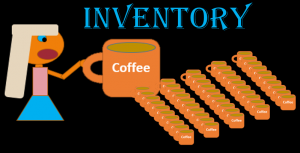There are many useful ways to separate and categorize business entities, one being by business form, by type of business structure, another being by a business’s relation to inventory, whether the business is selling inventory and whether they produce the inventory they are selling.
Three broad categories of business structure are a sole proprietorship, partnership, and corporation.
Sole Proprietorship Business Structure

A sole proprietorship is a business owned by one person and is the most common type of business in the United States. The benefits of a sole proprietorship are that they are easy and inexpensive to form. An individual who starts acting as a business, generating revenue, is a sole proprietor by default unless they create some other type of organizations. The income from a sole proprietor is taxable but will be reported on the individual tax return, on Form 1040 supported a supplemental Schedule C.
The disadvantages of a sole proprietor include limited personal liability protection and a limited ability to generate capital when compared to other types of organizations.
Partnership Business Structure
 A partnership is similar to a sole proprietor except that the business now has two or more partners. A partnership has the same benefit of easy formation and the same drawbacks of liability exposure and limited capital generation options.
A partnership is similar to a sole proprietor except that the business now has two or more partners. A partnership has the same benefit of easy formation and the same drawbacks of liability exposure and limited capital generation options.
Corporation Business Structure
A corporation is a separate legal entity. Corporations are less common than the sole proprietorship but generate the largest percentage of total U.S. revenue.  The benefits of a corporation include that they provide liability protection through being a separate legal entity, the theory being that the assets of the corporation are at risk but personal assets are not, personal assets having more protection when compared to other types of organizations. The disadvantages of a corporation include that they are more costly to form, more complicated to maintain, and can result in double taxation.
The benefits of a corporation include that they provide liability protection through being a separate legal entity, the theory being that the assets of the corporation are at risk but personal assets are not, personal assets having more protection when compared to other types of organizations. The disadvantages of a corporation include that they are more costly to form, more complicated to maintain, and can result in double taxation.
Strategy for Learning Accounting Transactions
Much more can be said about types of entities, but this will provide a starting point. A good way to learn accounting concepts is to start out examining transactions related to a sole proprietorship and then move to a partnership and then a corporation. The reason for starting with the sole proprietorship is that it is a business form that most people can relate to and because many of the transactions found in a sole proprietorship will be the same for all entity types.
Once we understand transactions related to a sole proprietorship we can then move to a partnership, concentrating on the areas that are different from a sole proprietorship. Many of the transactions and processes will be the same, both entities needing to record the paying of the rent, employees, and utilities, both entities recording revenue. Transactions will differ, however, in the equity section because a partnership will have two or more owners, so the equity section is where to spend much of our time learning new concepts.
Once we understand a sole proprietorship and partnership we can then move to a corporation, concentrating on the areas that are different. Many transactions will remain the same, but the equity section is one area that will differ, the owners now being stockholders.
How and Why to Categorize Businesses by Inventory Use
Another useful way to categorize businesses is by industry or by whether they  use inventory and whether they produce inventory. A service company does not sell inventory, a merchandising business purchases and sells inventory, and a manufacturer produces inventory to sell.
use inventory and whether they produce inventory. A service company does not sell inventory, a merchandising business purchases and sells inventory, and a manufacturer produces inventory to sell.
A company’s relationship with inventory has a significant impact on many accounting transactions and reporting. A useful strategy for learning accounting concepts is to start out with a service company, using similar logic as we did when starting out with a sole proprietorship. Service companies have many of the same transactions as companies that deal with inventory, but they do not need to track inventory. We can then move to merchandising companies, companies that buy and sell inventory, adding the items that are different, items related to inventory. We can then move to manufacturing companies, companies that produce inventory, adding things that differ, the tracking of inventory from raw materials to work in process and then to finished goods, goods ready for sale.
For more check out the book available on Amazon
http://accountinginstruction.com/
http://www.youtube.com/c/AccountingInstructionHelpHowToBobSteele


